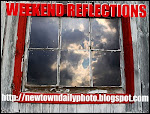I had never expected to see a heavy drunk in
Noh.
He is "Shojo(猩々)". "Shojo" is the title of the Noh play as well as the name of a legendary creature who lives in the water and loves Sake, Japanese rice wine, very much. His red face tells us he is a heavy drinker.
When I was a teenager, my mother took me to a Noh theater. It was the first time for me to enjoy Noh play. The theater was very comfortable and cozy, and Noh performance was very slow as if sculptures were walking. Chanting the story and playing Japanese traditional musical instruments sounded like a soft lullaby. All of the art helped me feel drowsy. I fell asleep and scarcely remembered what I saw.
Since then I had had stereotype of Noh plays," Noh is highly stylized theatrical art, I know, but not exiting. Movements are too slow and the language is too hard to understand. Noh is for the people as old as my mother."
"Shojo" completely overturned my stereotype of Noh. "How exciting Noh is!!"
He is a good drinker, but drinks like a fish. More sake he drinks, happier he becomes.
Now he is dancing joyfully.
He shows a number of funny drunken behaviors. Does he remind you of anybody,
your husband, father or brother when they are drunken?
He stumbles and loses his balance.
At last, he collapses.
In olden days Noh was performed on an open-air, simple stage like this. The sun, the sky, clouds, trees, everything around the stage become the effective stage backdrops. Clouds cast mysterious shadows time to time. A gust of the wind brings murmurs of the trees. Crows fly over the stage cawing.
A deer also comes to enjoy Noh play.
To perform "Shojo" is auspicious. Why is the Noh play of a heavy drinker auspicious? I suppose sake is involved in almost all ceremonial and happy occasions. So, to have sake is associated with happiness and joy. Also Sake is a very important item to offer to Shinto deities every day. That's why "Shojo" is considered as an auspicious play.
After watching Noh, I pondered for a while. When I was young, I lived fast and loved something exciting. Now, I am older than my mother at that time and I became to enjoy Noh. Is it because of my age or the exciting play?
Nara is said to be the cradle of Noh as the original four schools of Noh were born here. In olden days, the prototype of Noh would be performed in front of a shrine as the offereing to Shinto deities.



























